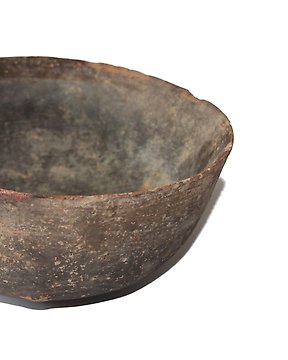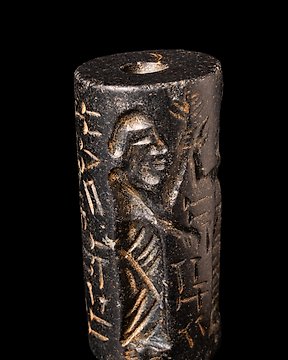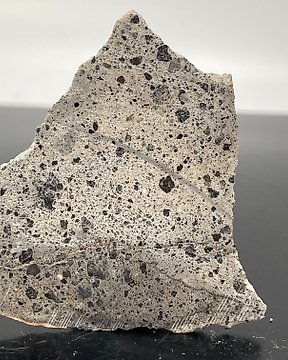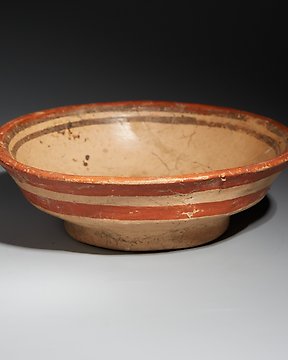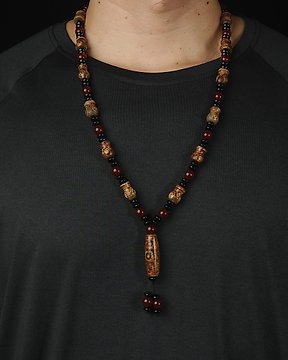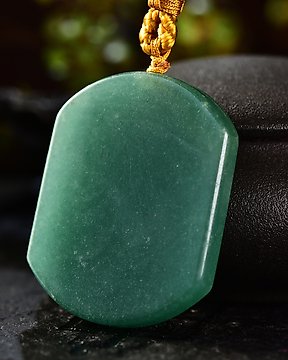All well! Thanks.
Se översättningColima, västra Mexiko Terrakotta Figur. 200 f.Kr. - 500 e.Kr. 15,5 cm H. Spansk importlicens.
Nr 84860779


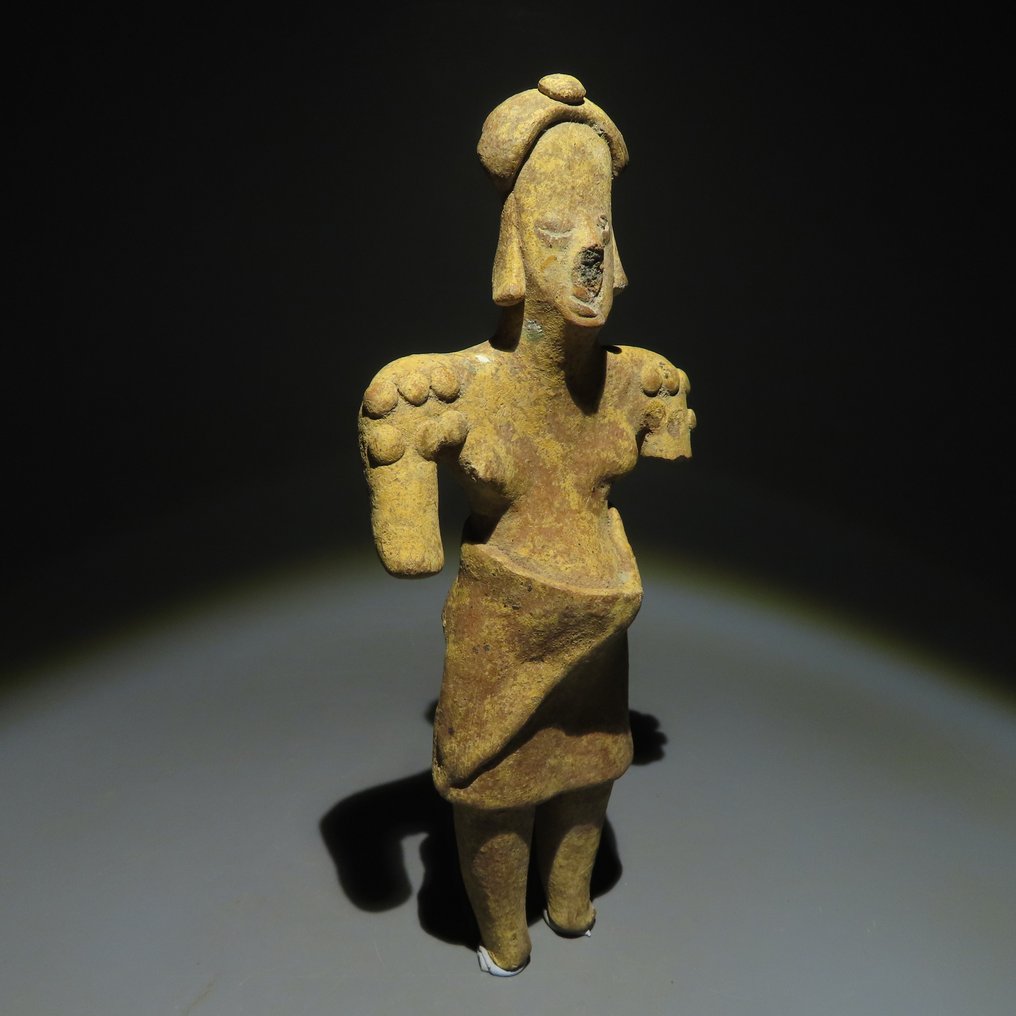
Figure
CULTURE: Colima, Western Mexico
PERIOD: 200 BC - 500 AD
MATERIAL: Terracotta
DIMENSIONS: 15.5 cm H.
PROVENANCE: Private collection, West Olive, United States of America. 1970.
CONDITION: Right hand missing.
DESCRIPTION:
The Colima people lived in northwest Mexico, in a rugged, low-lying coastal region carved by valleys, each with its own ecology and a warm, humid climate.
Little is known about their modes of subsistence, as most of the information we have comes from artifacts from private collections and from the excavation of cemeteries, not residential sites, which usually provide this kind of information. We do know that they practiced irrigation farming, which allowed them to live in large groups in relatively independent villages and urban centers.
Colima ceramics display a wide variety of figures and shapes, but little variation in technique. Most pieces have a burnished red finish and some are decorated with orange or white incisions. Molded figures are common, especially of plants, animals (especially dogs) and seashells. Human representations typically feature dwarfs and hunchbacks more than others, and few female forms. Many of these figures have “coffee-bean” eyes and are dressed in finely detailed traditional attire. Little is known of Colima stonework; only a few pieces such as mace heads, small masks and figurines have been found. These people also practiced basketweaving and weaving, and used metallurgy to make objects such as needles, axes, rattles, nose rings and ear ornaments.
Little is known about the Colima’s social order, but shamans or priests may have occupied positions of social importance. The existence of figurines resembling warriors as well as prisoners with hands tied points to the ceremonial importance of war in this pre-Columbian society.
The vast majority of ceramic pieces that have been ascribed to this culture are grave goods found in the tombs of individuals of high social rank. The Colima buried their dead in family tombs up to 30 meters deep, some with multiple chambers. The bodies were accompanied by a wide variety of grave goods, including ceramic statuettes of armed men, which served as symbolic guardians. Ceramic sculptures of dogs were another common grave good, and were believed to be the emissaries of Xolotl, the god of death.
The history of the Colima people is not well known, but, like many Mesoamerican cultures, the Colima displayed some stylistic elements that links them with the ancient Olmecs.
Notes:
- The piece includes authenticity certificate.
- The piece includes Spanish Export License.
- The seller guarantees that he acquired this piece according to all national and international laws related to the ownership of cultural property. Provenance statement seen by Catawiki.
Säljarens berättelse
Figure
CULTURE: Colima, Western Mexico
PERIOD: 200 BC - 500 AD
MATERIAL: Terracotta
DIMENSIONS: 15.5 cm H.
PROVENANCE: Private collection, West Olive, United States of America. 1970.
CONDITION: Right hand missing.
DESCRIPTION:
The Colima people lived in northwest Mexico, in a rugged, low-lying coastal region carved by valleys, each with its own ecology and a warm, humid climate.
Little is known about their modes of subsistence, as most of the information we have comes from artifacts from private collections and from the excavation of cemeteries, not residential sites, which usually provide this kind of information. We do know that they practiced irrigation farming, which allowed them to live in large groups in relatively independent villages and urban centers.
Colima ceramics display a wide variety of figures and shapes, but little variation in technique. Most pieces have a burnished red finish and some are decorated with orange or white incisions. Molded figures are common, especially of plants, animals (especially dogs) and seashells. Human representations typically feature dwarfs and hunchbacks more than others, and few female forms. Many of these figures have “coffee-bean” eyes and are dressed in finely detailed traditional attire. Little is known of Colima stonework; only a few pieces such as mace heads, small masks and figurines have been found. These people also practiced basketweaving and weaving, and used metallurgy to make objects such as needles, axes, rattles, nose rings and ear ornaments.
Little is known about the Colima’s social order, but shamans or priests may have occupied positions of social importance. The existence of figurines resembling warriors as well as prisoners with hands tied points to the ceremonial importance of war in this pre-Columbian society.
The vast majority of ceramic pieces that have been ascribed to this culture are grave goods found in the tombs of individuals of high social rank. The Colima buried their dead in family tombs up to 30 meters deep, some with multiple chambers. The bodies were accompanied by a wide variety of grave goods, including ceramic statuettes of armed men, which served as symbolic guardians. Ceramic sculptures of dogs were another common grave good, and were believed to be the emissaries of Xolotl, the god of death.
The history of the Colima people is not well known, but, like many Mesoamerican cultures, the Colima displayed some stylistic elements that links them with the ancient Olmecs.
Notes:
- The piece includes authenticity certificate.
- The piece includes Spanish Export License.
- The seller guarantees that he acquired this piece according to all national and international laws related to the ownership of cultural property. Provenance statement seen by Catawiki.
Säljarens berättelse
- 750
- 6
- 0
Vendeur très professionnel, top +++×
Se översättningPhotos trop contrastées pour bien percevoir les défauts, mais ces défauts étaient visibles pour autant. Le "Bon état" est trompeur. Sinon, envoi rapide et correctement emballé. Frais de port exagérés.
Se översättningGreat communication, delivery and product. Came with a well made certificate of authenticity and good packaging. Overall very happy with the purchase! Delivery is a bit expensive, but I recommend it
Se översättningMagnifique témoin du passé, envoyé avec tous les justificatifs, impeccable. Encore une fois très satisfait, un grand merci
Se översättningThank you for the Special offer and the fast shipping of this excellent piece of art!
Se översättningvery good description of the object, very good price for this rare item,. Fast sending (has been at my place 2 days after buying!). Definitely would buy again.
Se översättningSehr schön
Se översättningAs described, perfect logistic
Se översättninggreat seller, everything came as should with certificate of authenticity
Se översättningExceptionally well packaged, description aligned with positing received
Se översättningReally precious, but without sound...
Se översättningPainting well packed and rapidly sent!
Se översättningsempre grande rapidità e professionalità
Se översättningparfait bien reçu, merci
Se översättningVery satisfied with the small Greek Lekythos. As always (we have already bought several items from Bagot), the object was wrapped and sent immediately and with the greatest care.
Se översättningPerfect, excellent condition, good packaging, the parcel arrived without any problems… all is perfect as usual. Thank you very much and wait for an other nice piece like this one. Gilles.
Se översättning+++ Top vendeur professionnel comme d'habitude
Se översättningEmbora o custo de transporte esteja acima da média foi, realmente, muito bem executado e em embalagem cuidada. Expeditos e profissionais. Recomendo
Se översättningSnel en correct en goed verpakt verzonden
Se översättningoggetto bellissimo, fedele alla descrizione, venditore affidabile
Se översättningVery nice piece and fast delivery
Se översättningEverything ok, top seller! Thank you again!
Se översättningvery beautiful and fast shipping!thank you!
Se översättningExcelent, very good piece++++
Se översättningAnsvarsfriskrivning
Säljaren garanterar och kan bevisa att objektet införskaffats på lagligt sätt. Säljaren har informerats av Catawiki att de måste lämna den dokumentation som är obligatorisk enligt lagar och regler i det land de är bosatta. Säljaren garanterar och har rätt att sälja/exportera detta objekt. Säljaren tillhandahåller all information om härkomst som är känd om objektet till köparen. Säljaren säkerställer att alla nödvändiga tillstånd är/kommer att bli ordnade. Säljaren informerar köparen omedelbart om eventuella förseningar gällande att anskaffa sådana tillstånd.
Säljaren garanterar och kan bevisa att objektet införskaffats på lagligt sätt. Säljaren har informerats av Catawiki att de måste lämna den dokumentation som är obligatorisk enligt lagar och regler i det land de är bosatta. Säljaren garanterar och har rätt att sälja/exportera detta objekt. Säljaren tillhandahåller all information om härkomst som är känd om objektet till köparen. Säljaren säkerställer att alla nödvändiga tillstånd är/kommer att bli ordnade. Säljaren informerar köparen omedelbart om eventuella förseningar gällande att anskaffa sådana tillstånd.

